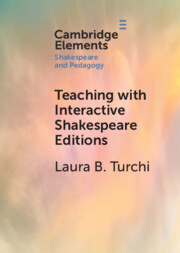Element contents
Teaching with Interactive Shakespeare Editions
Published online by Cambridge University Press: 16 November 2023
Summary
Keywords
- Type
- Element
- Information
- Online ISBN: 9781009024105Publisher: Cambridge University PressPrint publication: 14 December 2023



